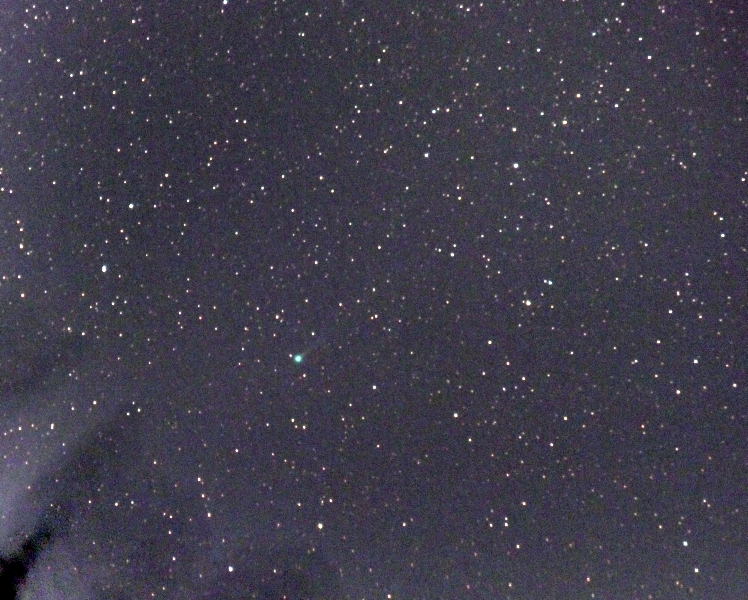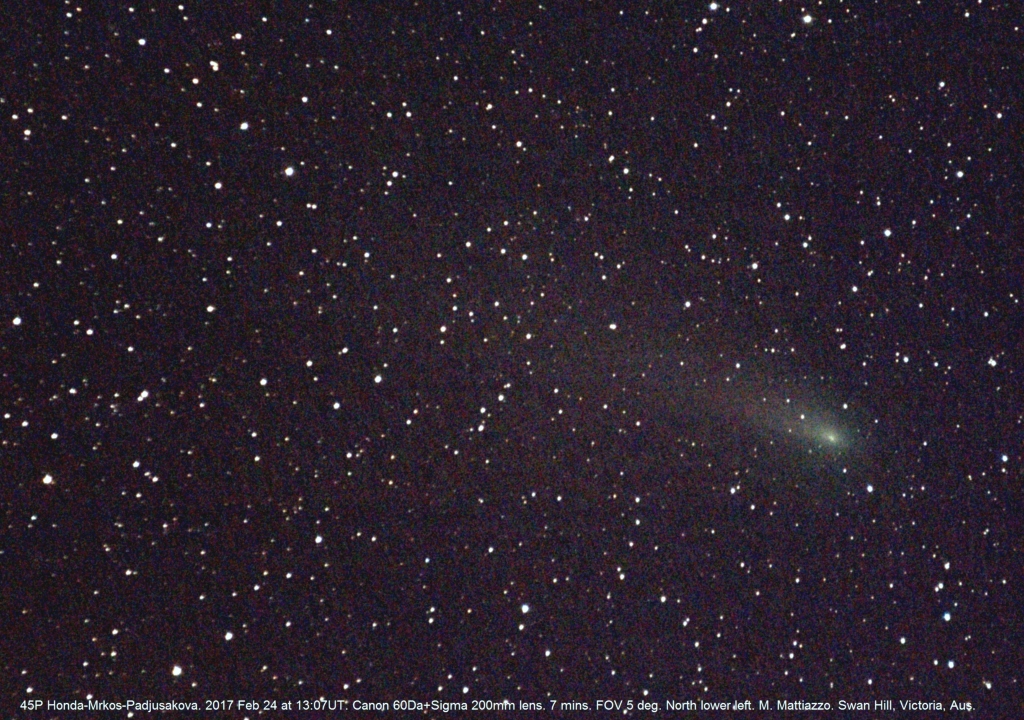
45P Honda-Mrkos-Padjusakova
Closest to Sun on 2016 Dec 31 at 0.53AU.
Closest to Earth on 2017 Feb 11 at 0.084AU.(12.6 million kms!)
Maximum magnitude 6 in February 2017
Orbital period: 5.26 years
45P is one of the brighter short period comets. The
famous Japanese comet hunter M. Honda was the first to spot it in 1948,
on
Dec 3, followed by Slovakian observers A. Mrkos and L. Padjusakova a few
days later, estimating it at magnitude 9.
Since discovery, the comet has been observed 12 times out
of 13 appearances.
The current apparition of 2016-2017 will be one of the most
favourable.
During December 2016, the comet was situated in
Sagittarius, low in the evening sky.
It brightened rapidly from magnitude 12 at
the start of the month, to magnitude 7 by months end, sporting a faint ion tail
a couple of degrees long in photos.
Below 45P Honda-Mrkos-Padjusakova on 2016 Dec 22. 10x30
sec exposures, Canon 60Da + 200mm lens.


My last observation prior to solar conjunction, occurred
on January 6 when the comet was situated only 3 degrees
above the evening
horizon in twilight, still shining at magnitude 7.0
The comet reached solar conjunction on 2017 January 27,
passing 9 degrees north of the Sun.
The Earth approach in February favoured
northern hemisphere observers. Their opportunity began in early February
as the
comet rapidly receded from morning twilight through Aquila and Hercules.
Southerners at 35S latitude picked up the magnitude 6
comet low in the northeast from the morning of February 9.
Unfortunately moonlight interrupted the show from
February 10.
At closest approach on February 11, the comet was situated in Hercules, midway between Beta and Delta.
On the morning of February 13, the comet was situated
inside the northern crown, Coronae Borealis.
The comets rapid westerly motion and fading was evident as it trekked through Bootes, Canes Venatici and Coma Berenices.
At midnight on February 20, the magnitude 8 comet rose above the north-eastern horizon, prior to moonrise.
Below: 45P Honda-Mrkos-Padjusakova on 2017 Feb 21
showing a broad dust tail with a sharp edge.


By the end of February, the comet rose after 10pm,
situated in Leo to the north of Delta Leonis.
It was a difficult diffuse object at magnitude 10.
Finder charts for February 2017.

 night mode chart
night mode chart
March 2017 finder chart - night mode